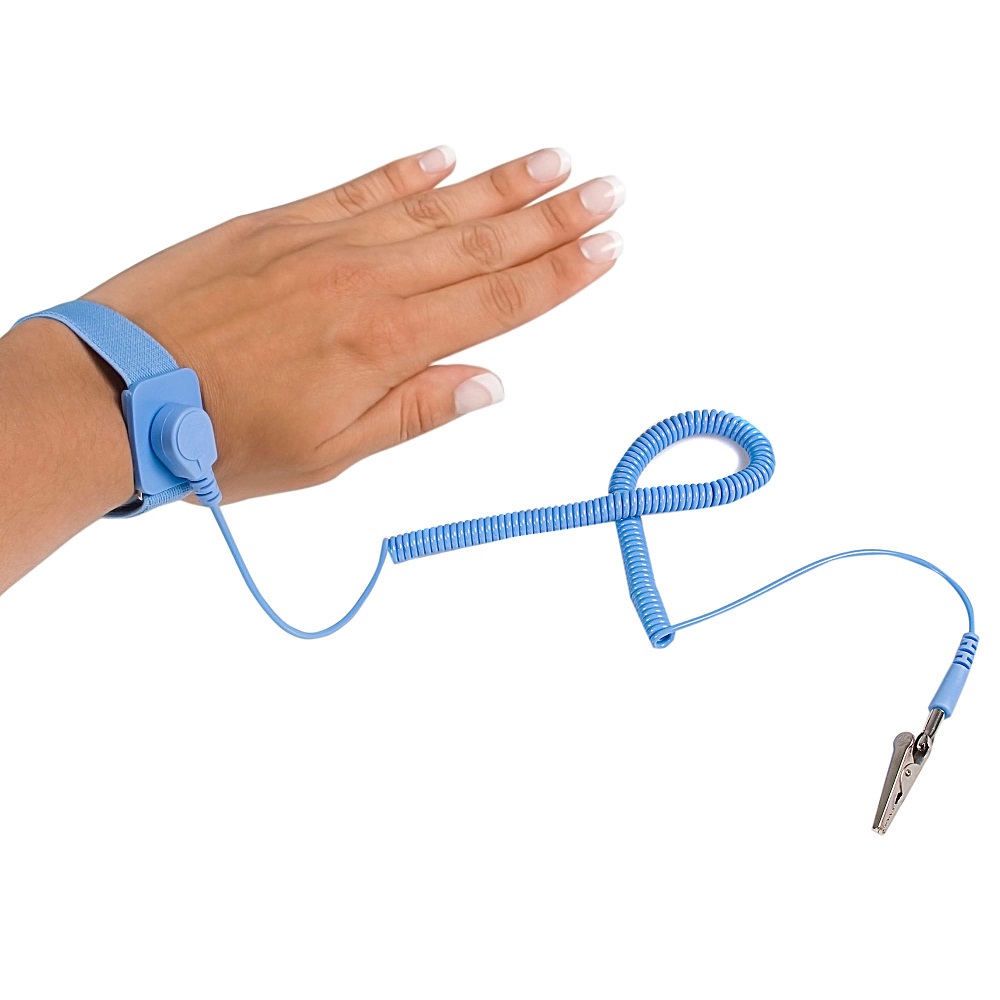What is an Anti-Static Wristband?
An anti-static wristband is a simple yet highly effective tool designed to prevent the buildup and discharge of static electricity. Static electricity can cause significant damage to sensitive electronic components, such as computer parts and circuit boards. As people often unknowingly generate static electricity by walking, touching surfaces, or even sitting, the need for protective equipment arises, especially in electronics manufacturing and repair.

The wristband usually consists of a band that is worn around the wrist. This band connects to a grounding wire, which typically has a clip or connector that attaches to a grounded surface. When the wristband is worn properly, it ensures that any static buildup is safely discharged into the ground. This lowers the risk of electrostatic discharge (ESD) damaging delicate electronic hardware.
Anti-static wristbands are not just for professionals. Anyone handling electronics—whether in a lab, an office, or even at home—can benefit from using them. They are particularly important for technicians working with hardware, but they are also valuable for hobbyists building PCs or repairing gadgets. By wearing an anti-static wristband, individuals can significantly reduce the likelihood of damaging sensitive components due to static electricity.
How Do Anti-Static Wristbands Work?
The Science Behind Static Electricity
Understanding how anti-static wristbands function involves grasping the concept of static electricity itself. Static electricity occurs when there is an imbalance of electric charges within or on the surface of an object. This imbalance can happen through various means, often through friction. For instance, when we walk, the friction between our shoes and the floor can create static charges on our bodies. When we touch electronic components, this charge can discharge, potentially harming sensitive parts.
The key function of an anti-static wristband is to provide a path for static electricity to flow safely to the ground. A wristband typically has conductive materials woven into it. These materials help to transfer static charges away from the body. The grounded wire connects the wristband to a stable electrical ground, allowing any accumulated static charges to be dissipated safely.
Grounding Mechanism
The grounding mechanism is vital for an anti-static wristband’s effectiveness. When you wear the wristband and attach it to a grounded surface—such as a power supply’s ground or a metal part of a workbench—the wristband ensures that your body is at the same electrical potential as the grounded object. This arrangement prevents a voltage difference that could lead to an electrostatic discharge happening when you come into contact with electronic equipment.
For optimal performance, it’s essential to ensure that the grounding point is genuinely grounded. If the grounding wire is not correctly attached to an effective ground, it may not work as intended. Therefore, testing the grounding point before relying on the wristband becomes crucial.
Choosing the Right Anti-Static Wristband
Types of Anti-Static Wristbands
Not all anti-static wristbands are created equal. Different types might suit different needs. Typically, wristbands vary in terms of material, durability, and design. Some bands are made with conductive fibers, while others feature a series of metal contacts. The choice largely depends on the situation and specific requirements.
A common type of wristband is the elastic band with a single grounding wire. This design is simple and effective for most users. However, there are also more advanced options available. For example, some wristbands come with adjustable sizes and multi-pronged ground connectors. These features can enhance comfort and versatility, especially in workplaces with many users.
Comfort and Fit
Comfort is another critical factor when selecting an anti-static wristband. Since users often wear them for extended periods, it’s vital that the wristband fits snugly yet comfortably. Many wristbands come with adjustable bands to accommodate different wrist sizes. Finding the right fit ensures that the wristband stays on without causing irritation.
Durability and Lifespan
Another consideration is durability. Anti-static wristbands are often exposed to various environments, including workshops with sharp tools and electronic components. Therefore, selecting a wristband made from robust materials can significantly affect its lifespan.
A durable wristband can last for years if maintained properly. Regular cleaning and safe storage are crucial for extending its life. Users should avoid excessive bending or twisting, which could damage the conductive material.
How to Use an Anti-Static Wristband
Initial Setup
Setting up an anti-static wristband is straightforward. First, make sure to find a suitable grounding source. Look for a grounded outlet or another grounded metallic object. Once you’ve identified a grounding point, attach the clip or connector from the wristband to it.
Next, wear the wristband around your wrist. Adjust it for comfort and ensure it fits snugly. A loosely fitted wristband may not work as efficiently. The conductive material inside the band needs to maintain contact with your skin to allow for proper discharge of static electricity.
Best Practices
For optimal results, follow specific best practices while using your anti-static wristband. First, always remember to wear the wristband when working with sensitive electronics. This behavior minimizes risks every time you handle components. Avoid taking off the wristband intermittently, as that increases the chance of accidental discharges.
It’s also essential to keep the grounding point accessible. If you find yourself needing to adjust your work position frequently, ensure the grounding clip can reach without straining. Some wristbands are designed with longer cords to allow for this flexibility.
Lastly, always inspect your wristband before use. Check for any signs of wear or damage that could compromise its effectiveness. If you notice any frayed wires or loose connectors, it might be time for a replacement.
The Importance of ESD Safety in Electronics
Understanding ESD Damage
Electrostatic discharge can be deceptively harmful. It’s often invisible and painless for the person handling the electronics. However, even a small discharge of electricity can cause irreparable harm to sensitive components.
For example, integrated circuits may suffer damage that isn’t immediately apparent. Often, the damage manifests through subtle defects that lead to poor performance or complete failure. This risk exists for virtually all electronic devices, from simple smartphones to complex computing systems.
Financial Repercussions
The financial implications of ESD damage can be staggering. Companies may need to conduct repairs or replace damaged components. Moreover, lost productivity due to equipment failures and the need for replacements can also add up. Businesses that frequently handle electronics must prioritize ESD mitigation strategies, including the use of anti-static wristbands.
Do-it-yourself enthusiasts and hobbyists also risk incurring costs. Having to replace components that could have been saved simply by wearing a wristband can be frustrating and costly.
Creating a Safe Working Environment
Promoting ESD safety shouldn’t only rely on wearing anti-static wristbands. Establishing a comprehensive ESD safety protocol in the workplace can further minimize risks. This protocol should include clear guidelines for working with electronics, proper grounding methods, and the use of other ESD protection equipment, such as mats and bags.
Creating an environment conducive to ESD safety helps everyone involved, from technicians to recreational builders. The result is a safer atmosphere where electronics can be handled with minimal risk.
Conclusion: The Value of Anti-Static Wristbands
In summary, anti-static wristbands serve as an essential piece of equipment when working with electronics. Their straightforward design allows them to effectively discharge static electricity away from sensitive components. With the right wristband, users can mitigate the risks of ESD damage, leading to safer and more efficient work practices.
Through choosing the right wristband and using it correctly, anyone can protect their electronic investments. With these small steps, you can create a safer environment for yourself and your electronics. Whether in a professional setting or at home, incorporating an anti-static wristband into your toolkit is a smart, practical choice.


